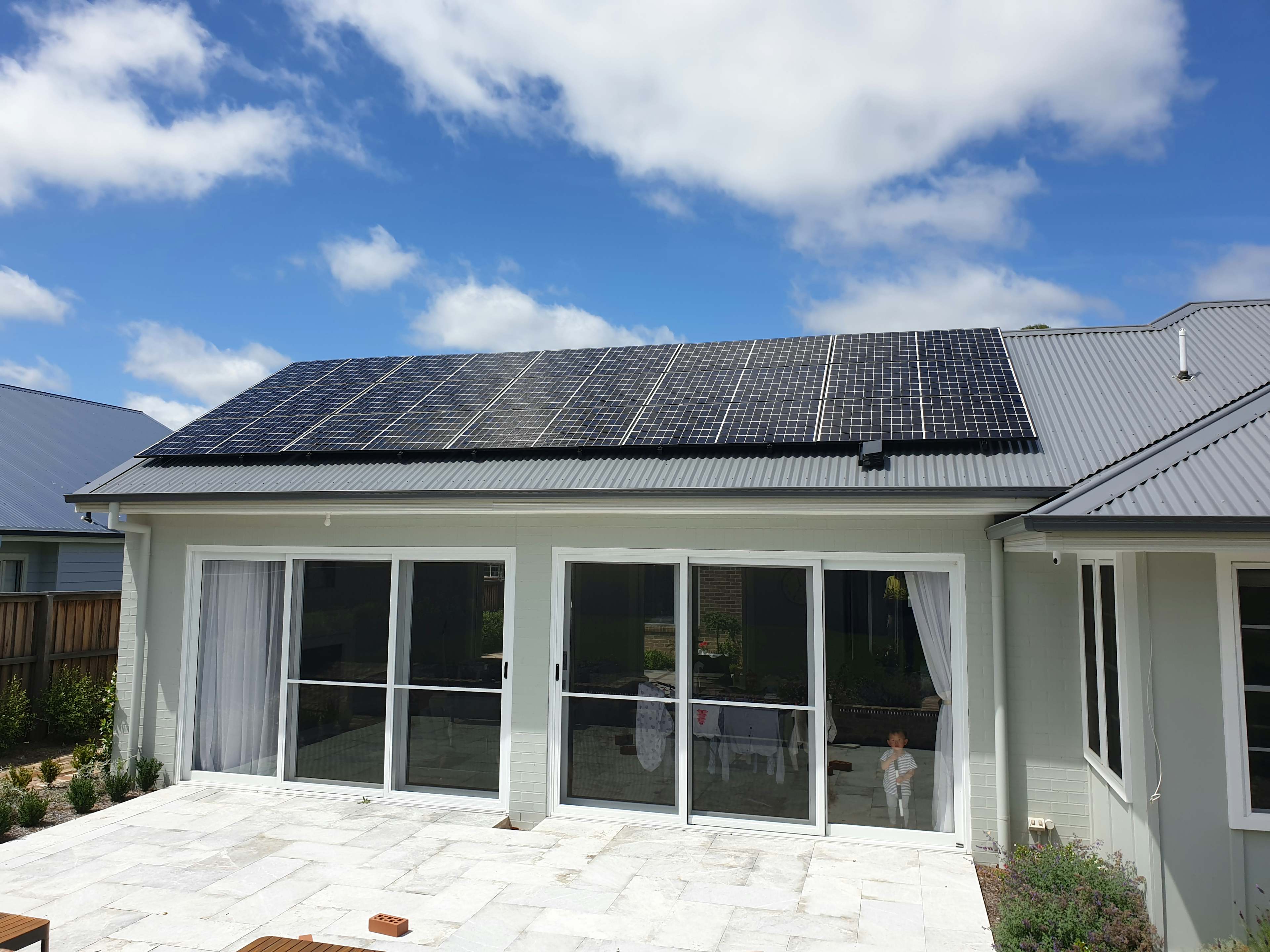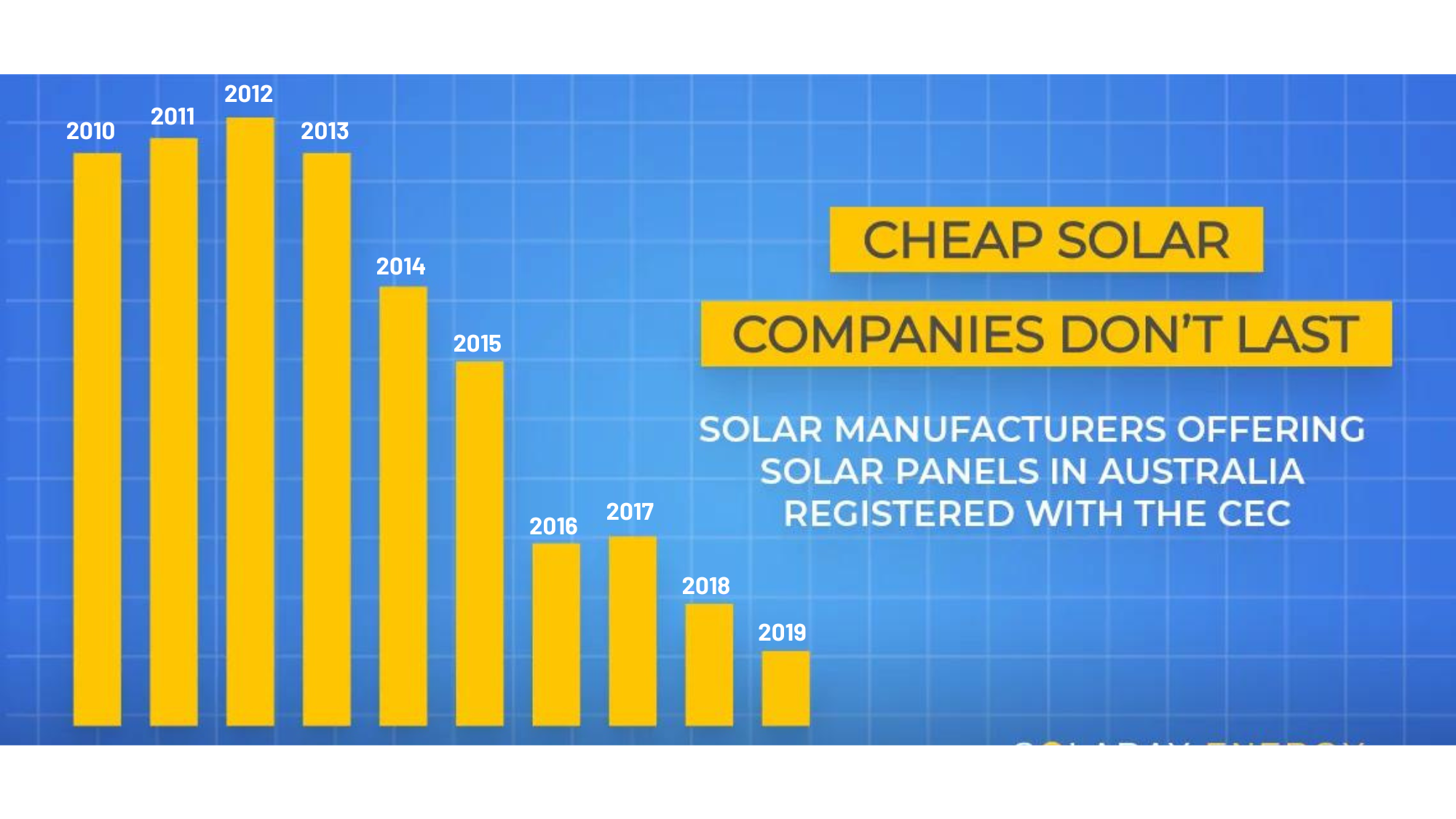Solutions
New Energy Solutions
Solutions
Brands
Solar Panels
Brands
Locations
Locations
About Us
About Us
Support
Need help?
Support
Learn
Featured Articles
Sizing Up A System
Finance & Rebates
Learn
Arkana Energy Group, Kozco Energy Group & Solaray Energy are now part of 1KOMMA5°!
About us
Why are my solar quotes so different?
The world of solar presents many challenges for the everyday Australian who is trying to choose the right solar system for them.
You see copious TV or Facebook ads for a 6.6kW system for a stupidly low price, but then get a quote from another supplier that is three or four times the price for what appears to be the “same” system.

You find yourself wondering how on earth the price differences could be so dramatic and feeling unsure of which installer you should go with. The systems appear the same, so why would you pay more when you can pay less?
The reality is, there are really only a few key elements when it comes to selling solar systems.
The quality of the products being used
The quality of the workmanship of the installation
The cost of running the business
What does this mean?
The cheaper a system is, the more corners that are being cut on one (or all) of the above measures to be able to make it that price.
Let’s look at each component in more detail.
There is no escaping the fact that the quality of the products being installed can have a massive impact on the cost of the system.
Side Note: The type of product can also have a significant impact on the cost. For example, N-type vs P-type solar modules, or string inverters vs DC Optimisers vs microinverters. All come with a price (and performance) difference. But within each type of product, there are multiple brands playing in that space which can also vary in quality and price. This article is focused on how quotes of similar product types can vary.
With the growing demand for renewables, there has been a lot of new manufacturers entering (and exiting) the industry over the last ten years or so. This is why it is important to do your homework on the brands and products that you are getting quotes for.

We suggest you research the following:
Who owns them?
Where are they based for manufacturing?
Do they have an actual Australian office with local staff?
How long have they been operating (in total and in Australia)?
How long is the product warranty?
What is their performance warranty? (look at both length of time and warranted product performance)
By researching the above, you will be better prepared to make an informed decision about the quality of the company whose products you are having quoted.
BLOG POST: Cheap Solar: An Incredible 1 in 5 Solar Systems are Dodgy
This phrase is a cliché in our industry for a reason. Cheap products that are properly installed could absolutely outperform quality products that are improperly installed.
The last thing that you want is someone who isn’t skilled and qualified, slapping panels on your roof without giving it the care and attention required to ensure that it will perform as expected, and most importantly, that it is safe.
Given that your solar system is going to sit on your roof for years and hopefully decades to come, it is absolutely worth the time, effort and money to ensure that you are getting both quality products AND quality installers.
The cost of quality tradespeople is higher than the cost of hiring unskilled workers. Lots of less reputable companies will cut corners on workmanship in any way they can.
When you see ridiculously cheap solar system prices, chances are they are using cheap workers (and probably cheap products as well) to undertake the installation. Whilst you might be saving money now, if your system has to be replaced down the track much sooner than planned, you will lose your original investment altogether.
Did you know?
In 2018, the Clean Energy Council suspended 160 solar installers and cancelled the accreditation of 12 installers and struck more than 5,500 models of solar panels off its list of approved products.
The Clean Energy Regulator inspected 1.2% of installations, and found that 1 in 6 of installations was substandard and 1 in 30 was unsafe.
When getting a solar quote, it is important to do your homework on the solar retailer as well. Things to check for include:
Do they have a physical Australian office?
How long have they been in business?
Are they a Clean Energy Council (CEC) Approved Solar Retailer?
What workmanship warranty do they offer? (CEC Approved Solar Retailers are committed to providing a five-year warranty at minimum)
How long have their installation teams been working with them?
Do they have an in-house service team?
We all know that running a business isn’t cheap.
There are a number of overhead costs that any quality solar retailer should be factoring into their quotes, including:
Staff salaries (sales, operations, service, electricians, administration etc.)
Rent for office and warehouse storage spaces
Licensing and insurance fees
Freight and logistics
After-sales service (which is of particular benefit to you)
You wouldn’t want your solar retailer going cheap on any of these, as it has a flow on effect on the work they do, the products they sell and the support they provide – all of which could end up costing you more. You want a business that is dedicating some of their costs towards the longevity of their business so that they are there to service your warranties if required.
There are always opportunities for solar businesses to cut corners, but it is always you, the consumer, who assumes the risk and ultimately pays the price for these shortcuts.
All these factors will impact the price of your solar quote. This is why seemingly similar solar quotes can have wildly different prices attached to them.
The next question someone typically asks us after asking why solar prices are so different is, ‘What should a system cost?’
The reality is, there is no magic formula that gives you what solar should cost in Australia as there are just too many variables that impact that dollar figure – particularly if you look at it state by state and metro vs regional – where different rebates, subsidies, freight and travel costs would apply.
To give you a ballpark idea, if we use greater Sydney as our sample, as a general guide your range is:
$750 – $1700 per kilowatt of installed solar
That covers quality entry level solar through to top of the range smart solar
Price is after STC rebate has been applied
Anything lower than $750 per kilowatt would put you in scary cheap territory.
If you’re thinking about asking us for a quote, you may be wondering where 1KOMMA5° fits into all of this. Depending on the products that you select for your installation, we are generally in the middle to higher end of the above range, and here is why:
We offer a limited range of panels and inverters – we will only install products that we have vetted and tested and that we are confident with the reliability of their performance and their warranties.
We have experienced teams of solar installers who have been with us for years. We also offer a 10-year workmanship warranty – double the required warranty for CEC Approved Solar Retailers.
Our Operations and Support team are larger than our Sales team. We believe in strong customer service and after-sales support. Our commitment to your system doesn’t end when we leave your home or business on the day of installation. It lasts for the warranted lifetime of the product.
With more than a decade operating in the solar industry, 1KOMMA5° is here to stay and we proudly stand behind our product range, our installation teams and our installations.